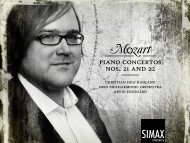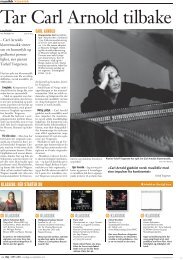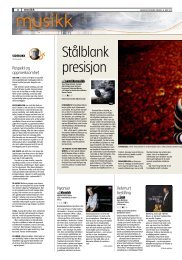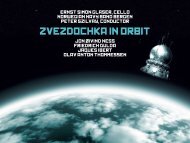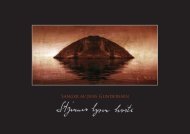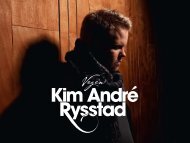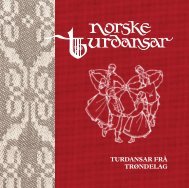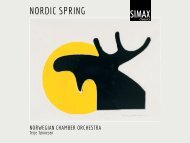Hjalmar Borgström
Hjalmar Borgström
Hjalmar Borgström
Create successful ePaper yourself
Turn your PDF publications into a flip-book with our unique Google optimized e-Paper software.
er of musical motifs with semantic interpretations which support the subject matter of the<br />
work. The most important aspect of Borgstrøm’s composition is nonetheless not so much<br />
these interpretations, but rather the musical joy of its rhythms, textures, tunes and thematic<br />
development. This work is shorter and clearly less pretentious than Jesus i Gethsemane.<br />
In the present recording the gong (tam-tam) has been replaced with the bass drum (gran<br />
cassa) for acoustic reasons.<br />
Concerto for violin and orchestra in G major, opus 25, is a classically structured concerto in<br />
three movements. As mentioned earlier the mood in this work is much brighter and musically<br />
livelier than in the two symphonic poems. The concerto is around thirty-five minutes<br />
long; the first movement is nearly fifteen minutes, the slower, lyrical second movement nine<br />
minutes, and the finale eleven. The work was composed in 1914 and belongs to Borgstrøm’s<br />
late period. The concert was premiered at “Den norske musikkfest” in 1914, with Leif Halvorsen<br />
playing the solo violin. Furthermore, the NRK archives contain a recording of the<br />
concerto from 17 September 1964 in a performance by the Musikselskabet Harmonien; soloist<br />
was Håkon Guldbrandsen.<br />
The violin concerto belongs genre-wise with the piano concerto from 1910, the D minor<br />
symphony from 1912 and the piano quintet from 1919. It is known that Borgstrøm had a<br />
written programme for the D minor symphony (it is mentioned in his article “My D minor<br />
symphony”, 1912), and probably also for the piano quintet. The interesting thing about<br />
this is that Borgstrøm probably conceived and shaped the course of his music in very similar<br />
ways, whether the work was classical and purely instrumental or a literary inspired<br />
symphonic poem. In both instances he strove to write music in which themes and motifs,<br />
harmonic and textural progressions, characteristic use of instruments and figures could be<br />
combined in dramatic and meaningful musical development. He wanted to give his music<br />
a narrative voice.<br />
13




